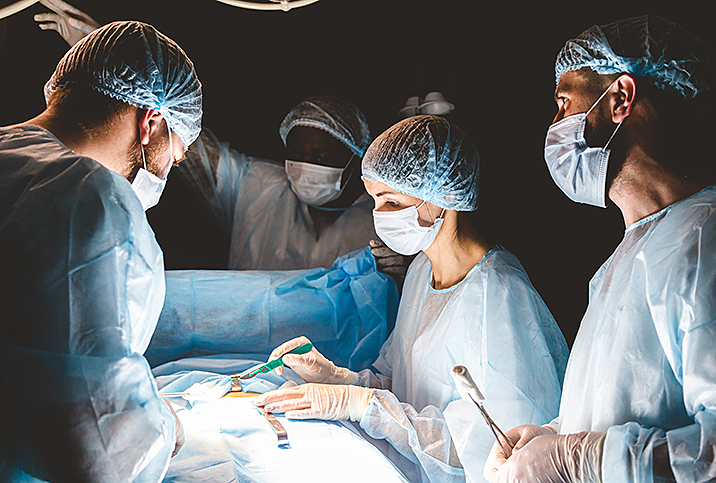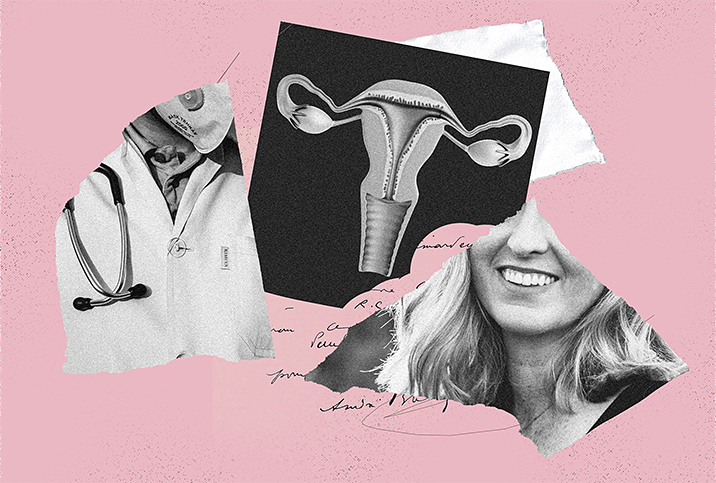Getting Your Ovaries Removed May Be Necessary for Cancer Treatment

Oophorectomy is a surgical procedure to remove one or both ovaries in women to treat certain conditions, typically cancer, or for preventive reasons.
There is both a minimally invasive and an invasive approach to oophorectomy, explained Fatima Daoud Yilmaz, M.D., a Stony Brook, New York-based OB-GYN. Laparoscopy is minimally invasive and involves making small incisions within the abdomen, while laparotomy requires a larger abdominal incision.
Oophorectomy may be performed alone or in conjunction with the removal of other gynecologic organs, such as the uterus, cervix or fallopian tubes. Depending on the patient's reproductive health, a doctor may prescribe any one of the following procedures:
- Unilateral oophorectomy, the removal of one ovary
- Bilateral oophorectomy, the removal of both ovaries
- Salpingo-oophorectomy, where the ovary and its attached fallopian tube are removed, either unilaterally or bilaterally
- Full hysterectomy, the removal of the ovaries, fallopian tubes and uterus
A full hysterectomy is considered a last resort in the case of reproductive cancers if the disease has spread considerably.
The necessity for an oophorectomy
For the most part, oophorectomies are done to remove cancer-stricken ovaries to prevent the spread of the disease to other organs. Doctors can prescribe the procedure for the following cases, according to Kecia Gaither, M.D., director of perinatal services at NYC Health + Hospitals/Lincoln in the Bronx in New York City:
- Removal to prevent infection before or immediately after the rupture of a tubo-ovarian abscess (pus-filled cysts or pockets affecting the ovary and its corresponding fallopian tube)
- Severe cases of pelvic inflammatory disease (PID)
- Endometriosis
- Removal of benign ovarian cysts or tumors
- Alleviate severe pain caused by ovarian torsion, the twisting of the ovary and fallopian tube
In the case of prophylactic oophorectomy, the ovaries are removed to reduce the risk of developing either breast cancer or ovarian cancer in women who are hereditarily disposed to the disease due to mutations in their BRCA1 and BRCA2 genes. Bilateral prophylactic salpingo-oophorectomy can reduce the risk of breast cancer by as much as 50 percent, while the risk of ovarian cancer goes down by as much as 90 percent.
Prophylactic oophorectomies are also recommended for women diagnosed with Lynch syndrome, which is a hereditary nonpolyposis colorectal cancer.
How the procedure is performed
For the most part, an oophorectomy is conducted under general anesthetic. However, in cases where the attending surgeon performs laparoscopic or robotic surgery, a local anesthetic may be administered instead.
- Laparotomy: The surgeon makes a long incision in the patient's lower abdomen to access the ovaries. Before removal, each ovary is severed from its blood supply and any surrounding tissues. Upon removal, affected areas are sutured, and the patient is taken to a recovery room.
- Laparoscopy: The surgeon makes a few small incisions in the lower abdomen. A small tube with a microcamera is threaded into one incision, while specialized microsurgery tools are slipped into the others. During the procedure, the camera transmits images of the inside of the patient's abdomen to a monitor, which is used to guide the tools during the operation. Each ovary is separated from its blood supply and surrounding tissues, and these are placed in small pouches that are then pulled out through one of the incisions.
- Robotic laparoscopy: The surgeon uses a surgical robot to perform the procedure, following its progress via a 3D monitor and using a hand-control panel to move the surgical tools.
How common are oophorectomies?
Around 200,000 oophorectomies are performed every year among women in the United States, stated a 2016 Agency for Healthcare Research and Quality report. In addition, older women are offered elective oophorectomy to decrease the chances of developing ovarian cancer.
The same report indicated that women older than 55 were more likely to have both oophorectomy and hysterectomy in combination, regardless of the cause.
Oophorectomies are typically prescribed only if there is a strong possibility that cancer might spread or has already spread to surrounding organs, especially in the case of women who are trying to have a child or who are concerned about their fertility.
The risks of oophorectomy
Like all surgeries, oophorectomy has risks.
"The risks vary based on the person's age at the time of surgery, the reason for the surgery and whether one or both ovaries are removed," Daoud Yilmaz said.
Induced menopause is a significant risk. If both ovaries are removed, your period will cease immediately. If only one ovary is removed, menopause will likely start within five years. Gaither noted that other side effects include:
- Post-surgical bleeding
- Infection
- Accidental damage to surrounding organs
- Ruptured cysts or tumors which may spread cancerous cells to healthy organs
- Retention of just enough ovarian cells to cause persistent symptoms such as pelvic pain, a condition referred to as ovarian remnant syndrome (ORS)
Women of childbearing age face the risk of infertility when they have an ovary removed.
"Young patients who have not yet reached menopause who have one ovary removed run the risk of a reduced total number of eggs in the body," Daoud Yilmaz explained.
Available studies that examined fertility rates of young women who had undergone removal of one ovary quote pregnancy rates of 44 percent to 82 percent. A 2017 meta-analysis published in BJOG: An International Journal of Obstetrics & Gynaecology indicated that patients with one ovary have similar pregnancy rates as those with two ovaries but experience diminished success if they require in vitro fertilization (IVF) to conceive.
In addition, a recent multicenter cohort study published in the journal Human Reproduction found women who had one ovary removed had significantly lower live birth rates after IVF than women with two ovaries.
What to expect before, during and after oophorectomy
Prior to the procedure
Imaging tests, such as X-rays and transvaginal sonograms, are conducted to help surgeons plan for the procedure. Patients need to stop taking certain medications 24 to 48 hours prior to surgery. A full fast is mandated several hours before the procedure.
During the procedure
Most patients are under a general anesthetic, asleep and unaware of the procedure. Patients undergoing laparoscopic procedures under a local anesthetic may experience slight discomfort.
Post-procedure
Patients are taken to recovery rooms to stay until the anesthetic has worn off.
Recovery depends on how the surgery was performed. Daoud Yilmaz said patients who undergo minimally invasive oophorectomy are usually discharged the same day and back to their usual level of physical activity (albeit with pain and soreness) within a week or so.
However, patients with a large abdominal incision are usually admitted to the hospital for a few days after surgery due to increased levels of postsurgical pain requiring more intensive nursing care and medication. Therefore, their recovery time is closer to four to six weeks, but this time frame varies from patient to patient.
Follow-up care is a must
Don't miss follow-up care to ensure your full recovery after an oophorectomy. Get your test results, keep a list of all medicines you need to take and always go to appointments. Remember to contact your doctor if problems arise.

















